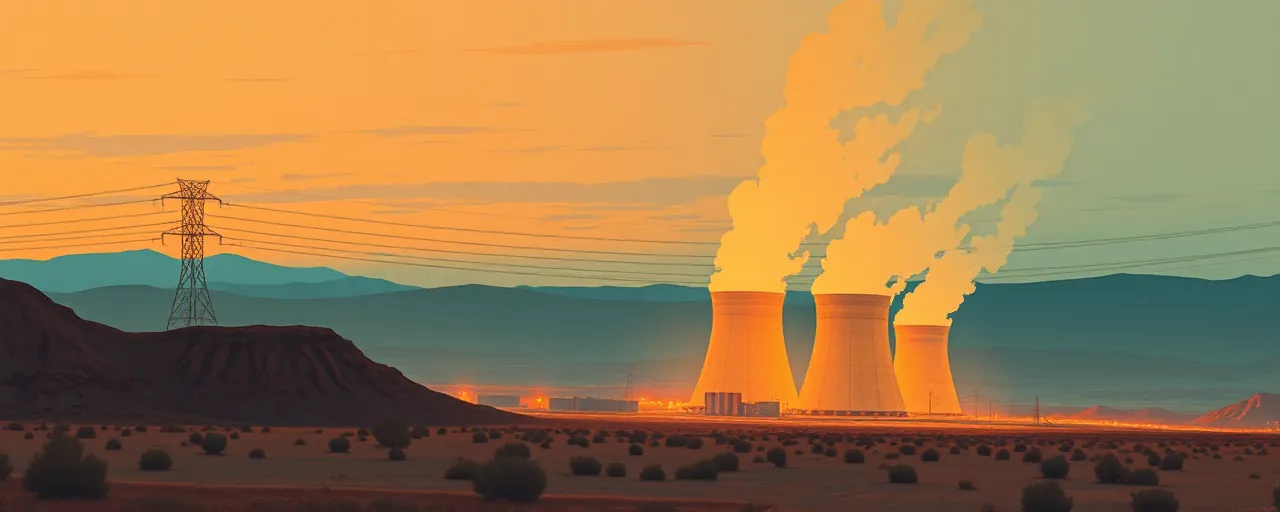A Record-Breaking Sale in Utah
In the vast deserts of Utah, a quiet energy revolution is taking shape. The Bureau of Land Management recently auctioned off 14 parcels of public land, spanning over 50,000 acres, for geothermal development. The sale raked in $5.6 million, averaging $111 per acre, a figure that outshines previous geothermal lease sales in the state. It’s a moment that caught many by surprise, signaling growing interest in a resource often overshadowed by solar or wind.
This wasn’t just about dollars changing hands. The revenue from these leases will flow to the U.S. Treasury, Utah’s state coffers, and local counties, promising a financial boost for schools, roads, and public services. Yet, beneath the numbers lies a broader story: geothermal energy, long a niche player, is stepping into the spotlight as a reliable power source in a world hungry for stability.
Why Geothermal Matters Now
Geothermal energy taps heat from deep within the Earth to generate electricity or provide direct heating. Unlike solar panels that dim at dusk or wind turbines stalled by calm days, geothermal plants run around the clock. In Utah, where blistering summers and icy winters strain power grids, this consistency is a game-changer. The state’s geology, rich with hot springs and volcanic remnants, makes it a prime candidate for projects like the Blundell Geothermal Plant, already humming in Beaver County.
Beyond reliability, geothermal boasts a lighter environmental footprint than coal or gas. Studies show it emits a fraction of the carbon dioxide and sulfur compounds of fossil fuels, aligning with broader goals to curb pollution. Advocates, including energy firms and local leaders, see it as a win-win: jobs for workers and cleaner air for communities. But it’s not without skeptics, who point to the costs and risks of drilling into the Earth’s crust.
Economic Ripples and Local Gains
The economic case for geothermal is hard to ignore. Building a single 50-megawatt plant can generate hundreds of jobs, from engineers plotting subsurface maps to laborers pouring concrete. In places like Nevada, geothermal has already pumped millions into state and county budgets through taxes and royalties. Utah’s recent lease sale, covering three counties, sets the stage for similar gains. Half the revenue goes to the state, a quarter to local governments, and the rest to federal accounts.
There’s more to it than paychecks. Geothermal projects often spark infrastructure upgrades, like better roads or power lines, that benefit rural areas long overlooked. Some companies are even eyeing geothermal to power data centers or cryptocurrency mining, industries that thrive on cheap, steady energy. Yet, not everyone’s sold. Ranchers and small-town residents sometimes worry about land access or water use, fearing their way of life could take a hit.
The Environmental Trade-Offs
Geothermal’s green credentials are strong, but they come with caveats. While plants emit far less than fossil fuel counterparts, drilling can stir up trouble. Extracting fluids from deep reservoirs risks releasing chemicals like arsenic or mercury if mishandled. In rare cases, projects have triggered small earthquakes, rattling nearby communities. Modern techniques, like reinjecting water back into the ground, aim to keep these risks in check, but they don’t erase them entirely.
Land use is another sticking point. Geothermal plants need less space than coal mines or solar farms, but their footprint still sparks debate. Environmental groups often push for careful siting to protect wildlife or sacred sites, especially on public lands managed by the Bureau of Land Management. Balancing these concerns with energy demands requires navigating a maze of regulations, a process that can stretch years before a single watt is produced.
A Path to Energy Independence?
Geothermal’s steady output makes it a cornerstone for those eyeing energy independence. The U.S. sits on an estimated 5,000 gigawatts of untapped geothermal potential, enough to power millions of homes. Unlike oil or gas, which tie markets to global swings, geothermal is a homegrown resource. In Utah, where federal lands dominate, leasing programs open the door to harnessing this potential, reducing reliance on imports while bolstering grid resilience.
Still, scaling up isn’t simple. High upfront costs and long permitting timelines deter some investors. The federal government has tried to ease the way, with programs like the Department of Energy’s research into next-generation drilling. But recent policy shifts prioritizing oil and gas have left some wondering if geothermal will get the support it needs to compete.
Looking Ahead
Utah’s geothermal lease sale is a snapshot of a larger shift. It reflects a growing bet on an energy source that’s reliable, domestic, and cleaner than the alternatives. For local communities, it means jobs and revenue, but also tough conversations about land and resources. For the nation, it’s a piece of a puzzle that includes wind, solar, and yes, even fossil fuels, as policymakers grapple with how to power the future.
The road ahead will test how well these ambitions hold up. Can geothermal deliver on its promise without tipping the delicate balance of environment and economy? As drills bore deeper and plants come online, the answers will shape not just Utah, but a world racing to redefine energy itself.
